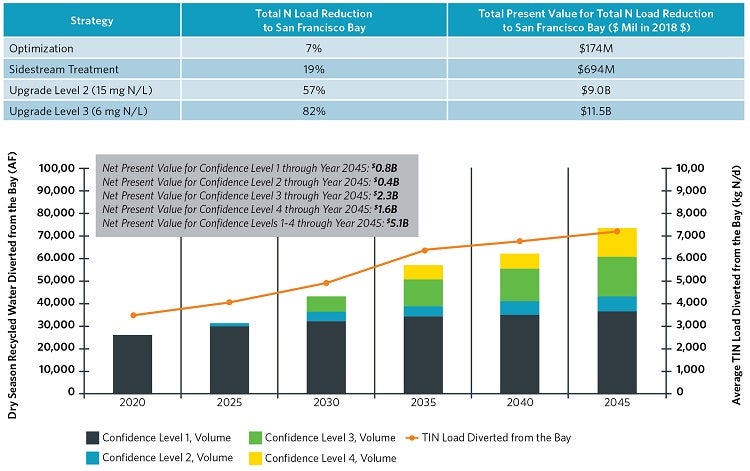
The Importance of Partnerships While Managing Nutrients Across a Watershed
Improving and Enhancing the San Francisco Bay Environment
While San Francisco Bay is recognized as a nutrient-enriched estuary, it has historically not been adversely impacted by nutrient loading due to a combination of water quality features (turbid environment, strong tides that limit periods of stratification, large clam population that effectively grazes on phytoplankton, etc.).
Ensuring the protection of beneficial uses and overall health of San Francisco Bay is a cornerstone for Bay Area treatment plants that are represented by the Bay Area Clean Water Agencies, also known as BACWA.
BE THE FIRST TO KNOW
Subscribe to receive our Water Insights
BACWA and its treatment plant member agencies (37 in total) have been working collectively and collaboratively with the regulators (Water Board), scientists at San Francisco Estuarine Institute, non-governmental organizations, etc. on the nutrient topic for over a decade. The efforts have resulted in a menu of nutrient management options as the Water Board moves toward nutrient limits.
Despite its historic resilience, the San Francisco Bay experienced a harmful algal bloom in August 2022 that resulted in the death of over 10,000 fish. This event has accelerated the implementation of nutrient limits with a vision of compliance by year 2034.
BACWA’s efforts to advance the science have included the annual characterization of nutrient discharge loads since 2013, monitoring for changes in eutrophication indicators and modeling biochemical phenomena to predict potential outcomes given a variety of circumstances, supporting science, funding engineering studies, etc. We have specifically led and/or supported annual discharge load reports, statistical analyses for developing load limits and the three cornerstone engineering studies to inform the nutrient management menu of options:
- Opportunities at the treatment plants via optimization, sidestream treatment and plant upgrades (conventional and enhanced nutrient removal) (HDR, 2018)
- Nutrient reduction by other means that offers multiple benefits beyond simply nutrient management:
- Recycled water as a strategy to divert nutrient loads away from San Francisco Bay (HDR, 2023)
- Natural treatment systems to polish nutrient discharge loads (San Francisco Estuarine Institute, 2023)
Summary of Results for Opportunities to Manage Nutrients at the Treatment Plant

Confidence level = level of confidence in the values provided. 1 = includes projects that are already in place and/or currently budgeted; 2 = includes projects that are in master planning stages; 3 = includes projects that are conceptual, and 4 = includes projects that are conceptual in nature and require agreements across multiple jurisdictions/agencies.
* The total net present value might vary from the sum of the listed confidence levels due to rounding
The overall costs for nutrient management across San Francisco Bay are anticipated to be several billion dollars (likely be funded by ratepayers). Rather than address nutrients at each treatment plant individually, we are developing a comprehensive menu of engineering options in collaboration with the listed players to make informed decisions that will balance costs and other benefits (water supply demands, habitat restoration, bay health, greenhouse gas emissions, etc.).
This approach, which uses science to evaluate the health of the San Francisco Bay ecosystem — coupled with partnerships for nutrient management across numerous treatment plants, has the potential to serve as a template for other watersheds considering nutrient management strategies.
References:
HDR (2018) Nutrient Reduction Study: Potential Nutrient Reduction by Treatment Optimization, Sidestream Treatment, Treatment Upgrades, and Other Means. Prepared for BACWA, Oakland, CA
HDR (2023) Nutrient Reduction Study: Regional Evaluation of Potential Nutrient Discharge Reduction by Water Recycling. Prepared for BACWA, Oakland, CA
San Francisco Estuary Institute (2023) Nature-Based Solutions for Nutrient Removal: Phase II Site Evaluations. Prepared for BACWA, Oakland, CA.




